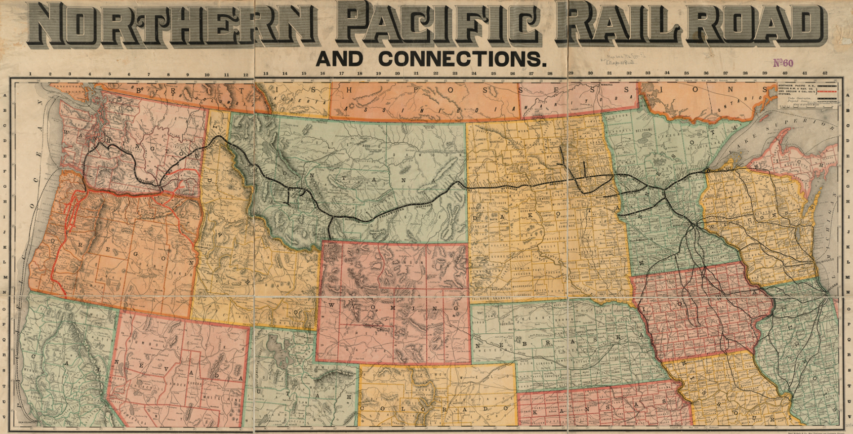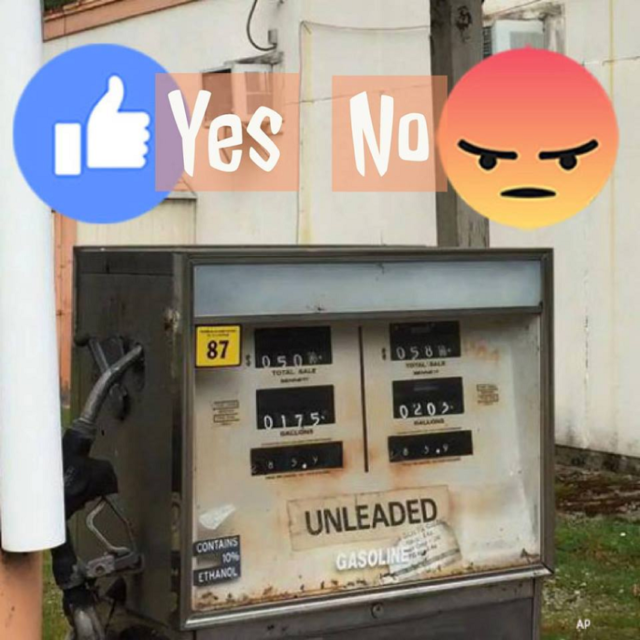Feral Historian
Published 15 Nov 2024The first book in S.M. Stirling’s Emberverse series, Dies The Fire yanks modern technology out of the world and sets the stage for a multi-faceted exploration of how distinct cultures emerge from small isolated groups and the profound effect individuals can have the societies that coalesce around them.
00:00 Intro
01:28 Founders
03:37 Desperation
04:51 Flawed Assumptions
07:05 Composites and Rhymes
(more…)
March 30, 2025
Dies the Fire and the Founder Effect
July 15, 2024
What Pioneers ate on the Oregon Trail
Tasting History with Max Miller
Published Apr 2, 2024Cornmeal cakes and the bacon in whose fat they were fried
City/Region: Oregon Trail
Time Period: 1856The Oregon Trail was tough. It was gruelling, food could become scarce, and even the drinking water was mostly unpalatable (not to mention the threat of dysentery). Emigrants packed well over 1,000 pounds of food into their wagons, staples like flour, bacon, coffee, sugar, rice, and hardtack (clack clack). They also relied on finding food like edible plants, fish, and game along the way.
These cornmeal cakes went by many names, including johnny cakes and hoe cakes. The ingredients are simple, but they’re surprisingly delicious. Without anything to leaven them, they’re a bit dense, but they taste great. The flavor is a combination of cornbread, sweet molasses, and bacon, kind of like a 19th century McGriddle. This is a great recipe to play around with. You could add some spices for a fancier version, swap out some of the water for milk, or use other fats or sweeteners.
(more…)
December 18, 2022
December 30, 2021
The Army’s Labor Union: Winchester 94s for the Loyal Legion of Loggers & Lumbermen
Forgotten Weapons
Published 30 Aug 2021http://www.patreon.com/ForgottenWeapons
https://www.floatplane.com/channel/Fo…
Cool Forgotten Weapons merch! http://shop.forgottenweapons.com
Today we have a rifle from a really neat forgotten corner of American military history. During World War One, the Pacific Northwest was the source of prime lumber, in particular Sitka Spruce that was ideal for aircraft production. The US military wanted that spruce for its own aircraft, and there was also massive demand from France and the UK for their production as well. As part of the American war effort, the Signal Corps (which oversaw military aviation) set about increasing spruce production severalfold.
The Corps sent a Colonel to investigate what would be necessary to do this, and he found that logging work was being significantly disrupted by labor union organizing, ranging from strikes to active sabotage. In response, the Army essentially created its own labor union, the Loyal Legion of Loggers and Lumbermen which both provided some of the labor reforms sought by groups like the IWW and also succeeded in massively increasing timber output for the war. The LLLL is a mostly-forgotten organization, and most of the documentation on it is from very left-wing organizations that paint it as a government attempt to quash labor rights. The reality appears to be far more nuanced, with several very legitimate reforms instituted in good faith. Unfortunately, the best reference on this period is completely out of print, Soldiers and Spruce: Origins of the Loyal Legions of Loggers & Lumberman by Harold Hyman (https://amzn.to/3lErrRC).
At any rate, part of the effort included the creation of the Spruce Production Division — 25,000 soldiers (mostly with backgrounds in logging and lumber) to Vancouver. They were seconded to private logging companies with Army-subsidized wages, but retained a military structure and officer corps. The Signal Corps purchased about 1,800 Winchester Model 1894 rifles in .30-30 caliber to arm a segment of the Division for security and military police type duties. Winchester 94s were in production and readily accessible, and the Division’s mission did not justify giving them Enfield or Springfield rifles needed by troops in Europe. These Winchesters were marked with a “US” property stamp and flaming bomb, and had serial numbers between 835,000 and 853,000 (specific numbers are not known because Winchester’s records form this period were destroyed). When the war ended, the guns (along with the Division’s other equipment) were sold as surplus, and they are found to this day in the Northwest. Many are in poor condition from decades of hard use, and they can be difficult to identify (and are also faked …) but they are a really neat artifact of a long-forgotten part of World War One history.
Contact:
Forgotten Weapons
6281 N. Oracle 36270
Tucson, AZ 85740
June 28, 2021
Warren’s terminal law of progress
David Warren considers the sudden rash of “revelations” about UFOs we’re getting in the dying media:
This is a demonstration of Warren’s terminal law of progress. As it extends towards “infinity”, all technical progress becomes terminally boring. This also applies to more modest attainments. A civilization that has merely made itself comfortable, and remained so for too long, must find a pretext to demolish itself. Antifa, Black Lives Matter, and the various more advanced “human rights” campaigns, simply expand in a vacuum of irreparable ennui. Their revolutionary demands can only be answered with wilful destruction — until the offending society is erased.
It follows that everything on this planet, made with human hands, however beautifully, must eventually come to a bad end, even though the majority of its inhabitants have good intentions, and are simply trying to get on with their lives, and would if the aggressive would leave them alone.
For instance, the Portland, Oregon police estimate it took only 200 insurrectionists to turn that city into a revolutionary hell-hole.
Perhaps our alien visitors came to discover the secret of our self-destruction. Or they were bored with the place they came from, but decided to leave before they were tempted to destroy it.
May 23, 2021
Portlanders “have developed rituals, devotions, and self-criticisms to fight ‘systemic racism’ and ‘white supremacy'”
In City Journal, Christopher F. Rufo talks about the “child soldiers of Portland”:

“Portland, Oregon” by Ben Amstutz is licensed under CC BY-NC 2.0
There are only a few places on earth where radicals and their children ritualistically burn the American flag and chant “Death to America”: Tehran, Baghdad, Beirut, Kabul, Ramallah — and Portland, Oregon.
The City of Portland, a cloud-covered metro on the south bank of the Columbia River, has become known for its political protesters. Anarchists, Communists, ecofascists, and various other agitators regularly denounce the police, politicians of both parties, and America itself, and flag-burning has become part of the protesters’ liturgy. Last summer, protesters associated with Antifa upped the ante with chants of “Death to America” and participated in months of violent protests to avenge the death of George Floyd while he was in police custody in Minneapolis. Children as young as four marched with the crowd to the federal courthouse, raising the Black Power fist and chanting “Fuck the Police!”
Famously the “whitest city in America”, Portland has become the unlikely headquarters of race radicalism in the United States. The city has elevated white guilt into a civic religion; its citizens have developed rituals, devotions, and self-criticisms to fight “systemic racism” and “white supremacy”. The culminating expression of this orthodoxy is violence: street militias, calling themselves “antiracists” and “antifascists”, smash windows and torch the property of anyone transgressing the new moral law.
We might be tempted to dismiss this as the work of a few harmless radicals “keeping Portland weird”, but in recent years, their underlying ideology on race has become institutionalized. The city government has adopted a series of Five-Year Plans for “equity and inclusion”, shopkeepers have posted political slogans in their windows as a form of protection, and local schools have designed a program of political education for their students that borders on propaganda.
I have spent months investigating the structure of political education in three Portland-area school districts: Tigard-Tualatin School District, Beaverton School District, and Portland Public Schools. I have cultivated sources within each district and obtained troves of internal documents related to the curriculum, training, and internal dynamics of these institutions. We can best understand the political education program in Portland schools by dividing it into three parts: theory, praxis (or practice), and power. The schools have self-consciously adopted the “pedagogy of the oppressed” as their theoretical orientation, activated it through a curriculum of critical race theory, and enforced it through the appointment of de facto political officers within individual schools, generally under the cover of “equity and social-justice” programming. In short, they have begun to replace education with activism.
The results are predictable. By perpetuating the narrative that America is fundamentally evil, steeping children in race theory, and lionizing the Portland rioters, they have consciously pushed students in the direction of race-based “revolution”. In the language of the Left, the political education programs in Portland-area districts constitute a “school-to-radicalism pipeline”: a training ground for child soldiers. This is not hyperbole: some of the most active and violent anarchist groups in Portland are run by teenagers, and dozens of minors were arrested during last year’s riots. These groups have taken up the mantle of climate change, anticapitalism, antifascism, and Black Lives Matter — whatever provides a pretext for violent “direct action”.
Contrary to those who believed that the end of the Trump presidency would bring a “return to normalcy”, the social and political revolution in Portland has only accelerated under President Joe Biden. On Inauguration Day, teenage radicals marched through southeast Portland, smashing the office windows of the state Democratic Party and unfurling large banners with hand-painted demands: “We don’t want Biden, we want revenge”; “We are ungovernable”; “A new world from the ashes”. Intoxicated by revolution and enabled by their elders, Portland’s kids are not all right.
May 6, 2021
Fallen Flag — the Northern Pacific Railway

Despite the vast land grants, the costs of building the railway eventually drove Jay Cooke, the original financial backer, into bankruptcy which was one of the major triggers of the financial disaster known as the Panic of 1873. The economic impact was widespread and was known — until the 1930s — as the “Great Depression”, and the US economy took several years to resume growth while other industrialized countries suffered the effects for longer.
NP reorganized by converting the bonds to stock, and the Lake Superior & Mississippi was reorganized as the St. Paul & Duluth. In 1881 control of the NP was purchased by Henry Villard, who also controlled the Oregon Railway & Navigation Co. and the Oregon & California Railroad. On Sept. 8, 1883, NP drove a last spike at Gold Creek, Mont., near Garrison, completing a line from Duluth to Wallula Junction, Wash. Northern Pacific trains continued on the rails of the OR&N to Portland, where NP’s own line to Tacoma resumed (it crossed the Columbia River by ferry from Goble, Ore., to Kalama, Wash.).
Even before completing the line at Gold Creek, NP began constructing a direct line from Pasco, Wash., over the Cascade Range to Tacoma. The Puget Sound area was beginning to grow, and NP wanted to reach it with its own line rather than rely on OR&N. Indeed, soon after the last-spike ceremonies, Villard’s empire collapsed and OR&N became part of Union Pacific (Southern Pacific got the Oregon & California). The Pasco–Tacoma line opened in 1887, with temporary switchbacks carrying trains over Stampede Pass until the opening of Stampede Tunnel in May 1888.
To help populate the railway’s claimed lands, colonization offices were established in northern Europe in the mid-1880s to attract immigrants to settle and farm along the right of way. Many Americans of German or Scandinavian ancestry can trace their roots back to these programs, which generally offered very cheap package deals for transportation to the United States along with parcels of land and other inducements.

Detail from an 1885 Rand McNally publication showing a “Shipper’s Guide To All Points On And Connections To the Northern Pacific Railroad, Its Branches And Connecting Lines”
Original scan from the Norman B. Leventhal Map Center at the BPL via Wikimedia Commons.
In 1901 Northern Pacific and Great Northern gained control of the Chicago, Burlington & Quincy by jointly purchasing approximately 98 percent of its capital stock. That same year James J. Hill and J. P. Morgan formed the Northern Securities Co. as a holding company for NP and Great Northern. The U.S. Supreme Court dissolved Northern Securities in 1904. In 1905 the two roads organized the Spokane, Portland & Seattle, which was completed from Spokane through Pasco to Portland in 1908. GN and NP attempted consolidation in 1927, but the Interstate Commerce Commission made giving up control of the Burlington a requisite for approval, a condition the roads found unacceptable.
In October 1941 NP purchased the property of the Minnesota & International Railway (Brainerd to International Falls, Minn.), which it had controlled for a number of years.
In image, Northern Pacific was the most conservative of the three northern transcontinentals. (Great Northern was a prosperous, well-thought-out railroad; the Milwaukee Road was a brash newcomer.) Bulking large in NP’s freight traffic were wheat and lumber. In the 1920s and 1930s NP suffered from smaller than usual wheat crops and competition from ships for lumber moving to the East Coast. Ship competition decreased during World War II, and postwar prosperity brought an increase in building activity and population growth to the area NP served. NP was the oldest of the northern transcontinentals and had been instrumental in settling the northern plains. It served the populous areas of North Dakota, Montana, and Washington. Its slogan was “Main Street of the Northwest,” and its secondary passenger train of the 1950s and ’60s was the Mainstreeter. Its flagship was the North Coast Limited, launched in 1900.
In 1956 NP and Great Northern again studied merger of the two roads, the Burlington, and the Spokane, Portland & Seattle. In 1960 the directors of both roads approved the merger terms. On March 2, 1970, NP was merged into Burlington Northern along with Great Northern; Chicago, Burlington & Quincy; and Spokane, Portland & Seattle.
July 16, 2020
QotD: The young Herbert Hoover
Herbert Hoover was born in 1874 to poor parents in the tiny Quaker farming community of West Branch, Iowa. His father was a blacksmith, his mother a schoolteacher. His childhood was strict. Magazines and novels were banned; acceptable reading material included the Bible and Prohibitionist pamphlets. His hobby was collecting oddly shaped sticks.
His father died when he is 6, his mother when he is 10. The orphaned Hoover and his two siblings are shuttled from relative to relative. He spends one summer on the Osage Indian Reservation in Oklahoma, living with an uncle who worked for the Department of Indian Affairs. Another year passes on a pig farm with his Uncle Allen. In 1885, he is more permanently adopted by his Uncle John, a doctor and businessman helping found a Quaker colony in Oregon. Hoover’s various guardians are dutiful but distant; they never abuse or neglect him, but treat him more as an extra pair of hands around the house than as someone to be loved and cherished. Hoover reciprocates in kind, doing what is expected of him but excelling neither in school nor anywhere else.
In his early teens, Hoover gets his first job, as an office boy at a local real estate company. He loves it! He has spent his whole life doing chores for no pay, and working for pay is so much better! He has spent his whole life sullenly following orders, and now he’s expected to be proactive and figure things out for himself! Hoover the mediocre student and all-around unexceptional kid does a complete 180 and accepts Capitalism as the father he never had.
His first task is to write some newspaper ads for Oregon real estate. He writes brilliant ads, ads that draw people to Oregon from every corner of the country. But he learns some out-of-towners read his ads, come to town, stay at hotels, and are intercepted by competitors before they negotiate with his company. Of his own initiative, he rents several houses around town and turns them into boarding houses for out-of-towners coming to buy real estate, then doesn’t tell his competitors where they are. Then he marks up rent on the boarding houses and makes a tidy profit on the side. Everything he does is like this. When an especially acrimonious board meeting threatens to split the company, a quick-thinking Hoover sneaks out and turns off the gas to the building, plunging the meeting into darknes. Everyone else has to adjourn, the extra time gives cooler heads a change to prevail, and the company is saved. Everything he does is like this.
(on the other hand, he has zero friends and only one acquaintance his own age, who later describes him to biographers as “about as much excitement as a china egg”.)
Hoover meets all sorts of people passing through the Oregon frontier. One is a mining engineer. He regales young Herbert with his stories of traveling through the mountains, opening up new sources of minerals to feed the voracious appetite of Progress. This is the age of steamships, skyscrapers, and railroads, and to the young idealistic Hoover, engineering has an irresistible romance. He wants to leave home and go to college. But he worries a poor frontier boy like him would never fit in at Harvard or Yale. He gets a tip – a new, tuition-free university might be opening in Palo Alto, California. If he heads down right away, he might make it in time for the entrance exam. Hoover fails the entrance exam, but the new university is short on students and decides to take him anyway.
Herbert Hoover is the first student at Stanford. Not just a member of the first graduating class. Literally the first student. He arrives at the dorms two months early to get a head start on various money-making schemes, including distributing newspapers, delivering laundry, tending livestock, and helping other students register. He would later sell some of these businesses to other students and start more, operating a constant churn of enterprises throughout his college career. His academics remain mediocre, and he continues to have few friends – until he tries out for the football team in sophomore year. He has zero athletic talent and fails miserably, but the coach (whose eye for talent apparently transcends athletics) spots potential in Hoover and asks him to come on as team manager. In this role, Hoover is an unqualified success. He turns the team’s debt into a surplus, and starts the Big Game – a UC Berkeley vs. Stanford football match played on Thanksgiving which remains a beloved Stanford football tradition.
Scott Alexander, “Book Review: Hoover”, Slate Star Codex, 2020-03-17.
February 20, 2019
August 2, 2018
Manufacturing the Engineered Wood Floor Joists
Bob Vila
Published on 30 Mar 2015Bob visits the Willamette I-Joist Mill in Woodburn, OR, before returning to Yonkers where the crew is assembling the second floor walls with structural insulated panels.
January 3, 2018
Oregon reacts in horror to the idea of pumping their own gas
Full-service gas stations have been on the endangered list for a long time … I can’t remember the last time I saw one in my travels. Apparently, if I’d been to Oregon, that’s all I’d have encountered because it’s one of two states that forbid drivers to pump their own gas. At least, that was until the start of 2018, when Oregon allowed certain rural gas stations to allow self-service, and you’d think the world was about to end, based on these Facebook comments:
Sandy Franklin I don’t even know HOW to pump gas and I am 62, native Oregonian…..I say NO THANKS! I don’t want to smell like gasoline!
Cathy Dahl No! Disabled, seniors, people with young children in the car need help. Not to mention getting out of your car with transients around and not feeling safe too. This is a very bad idea. Grrr
Tina Good Not a good idea, there are lots of reason to have an attendant helping, one is they need a job too. Many people are not capable of knowing how to pump gas and the hazards of not doing it correctly. Besides I don’t want to go to work smelling of gas when I get it on my hands or clothes. I agree Very bad idea.
Kyle Allen One time, my dad came to Oregon and pumped his own gas. The street immediately lit on fire and he caused massive recession countrywide because he took away 20 billion jobs by pumping his own gas. I was in the back seat when brother was nabbed through the locked door by a transient creeper who raised him to be his human ottoman. My dad then tried wiping his windshield but the stuff he used turned out to be sulfuric acid. The car exploded with me in it and I died. My dad lost 3 parenting points because he was 2 feet away fueling his car when he could have had someone else do this very simple task for him.
Joseph Kimrey It’s official.
Oregon is full of mentally defective, full grown children, incapable of the most mundane of adult tasks.Chris Donnelly Apparently most people in Oregon assume that in order to pump gas you must first remove all people from the vehicle and stand in the open while thugs attack from all angles, all while being sprayed with gas
Mike Perrone I’ve lived in this state all my life and I REFUSE to pump my own gas. I had to do it once in California while visiting my brother and almost died doing it. This a service only qualified people should perform. I will literally park at the pump and wait until someone pumps my gas. I can’t even
Shifty McQuick If your only marketable job skill is being able to pump gas, by god, move to Oregon and you will have reached the promised land.
Kelsa Freitas Yuck! Pumping my on fuel in freezing temperatures and handling a nasty ole fuel nozzle that 50 other people have touched that day (and who knows what cooties are on there), no thank you. It’s nice to not have to pump your own fuel.
H/T to M.A. Rothman for linking to the original post.
November 6, 2017
Oregon sets new standard in authoritarian oversight over teens
Amy Alkon reacts to a report about a new Oregon state law that goes a long way to remove agency and personal autonomy from teenagers in the state:
The latest is a story from Oregon, from The Daily Caller, where Eric Owen reports that public school teachers must now inform the government when they find out a teenager has had sex. No, we’re not talking about sex with some adult predator, but sex with another teen — consensual sex with another teen.
Teachers in the Salem-Keizer school district face fines and can even lose their jobs if they fail to blow the whistle on teen students who are voluntarily having sex with each other, reports the Statesman Journal, the main newspaper in Salem.
The draconian requirements also require teachers in the district to report teen students who might have had consensual sex.
…The state law — ORS 163.315 — makes it illegal for anyone who is under 18 years of age to consent to a sex act.
The Statesman Journal story by Natalie Pate does say this:
Another Oregon law, ORS 163.345, or the “three-year rule,” addresses when the individuals are similar in age and force and coercion are not present. This often is thought of as “consensual” activity.
While this law can be applied in criminal proceedings, it does not apply to mandatory reporting.
The problem is that when laws are passed, laws can be used.
The government has no business telling people under 18 that they aren’t allowed autonomy over their own bodies.
So high school teachers are now legally required to report to state authorities even the suspicion that a teen in their classes has had sex. Police officers and social workers can then go to that school and investigate the student (one can easily imagine how traumatic that might be…). There’s no indication how long or under what conditions these “sex files” will be kept or accessed. Talk about fearing that something was going to go on your “permanent record”!
May 1, 2017
Math is hard … and in Oregon it can lead to hard time
Did you know that you have to be certified by an Oregon regulatory agency to do certain kinds of math? Mats Järlström has discovered just how draconian the state can be about unauthorized mathematizing:
After exploring the math behind traffic light timing, Järlström concluded that the formula, created in 1959, accounted for only two yellow light scenarios: driving straight through the intersection, or stopping.
So Järlström decided to try to improve the math managing the transition time from yellow to red, in order to allow a driver traveling through an intersection with a yellow light to slow down and turn without being flagged for a red light violation. And in early 2015 he shared his proposal with the media, policymakers, and those interested in the traffic technology.
“It’s not rocket science,” Järlström said in a phone interview with The Register. “It took me about 40 minutes to figure it out.”
For communicating his findings in five emails, the Oregon State Board of Examiners for Engineering and Land Surveying in March, 2015 opened an investigation. In August 2016, the rules body found [PDF] that Järlström had engaged in unlicensed engineering and assessed a $500 fine.
Even better, if he persists, he may even face jail time for his unlicensed mathematical crime spree.
Järlström paid the fine but fears his ongoing interest in traffic light timing will lead to further penalties. Violating the Act could subject him to $1,000 in civil penalties, $6,250 in criminal fines, and as much as a year in jail.
April 20, 2015
Everything is “interstate commerce”
Last month, Elizabeth Nolan Brown reported on another case where the “interstate commerce” excuse is used to justify federal charges for a purely intra-state activity:
Until 2010, Oregon entrepreneur Lawrence George Owen, 73, owned one restaurant, eight strip clubs, and two adult-video stores in the Portland area. At these businesses, Owen installed ATM machines in case customers needed to take out cash. With that cash, customers could do an assortment of things — tip dancers, buy food and drinks, leave the establishment and go grocery shopping. And sometimes, customers used the cash to privately pay some strippers for sex.
Now Owen faces federal charges for “conspiring to use interstate commerce” in promotion of prostitution.
The charges are the results of a nine year joint-effort by Portland’s vice squad and the FBI. Between 2006 and 2009, undercover Portland police officers arranged for 18 acts of prostitution with dancers at three of the clubs. After that federal agents took over, searching Owen’s businesses and the homes of his alleged co-conspirators and seizing $843,000 in cash.
Owen, it should be noted, was living in Mexico most of this time. He is currently on a U.S. Marshall’s hold in a Portland jail, after being detained by federal agents in late February.
You might be wondering how Owen faces federal charges if all of the alleged prostitution-promoting took place in Portland. Promoting prostitution is only a federal crime under certain circumstances, such as when the perpetrator transports or coerces an individual across state lines for prostitution purposes. Using mail, telephone calls, or other “facilities of interstate commerce” in service of prostitution will also do the trick. But the FBI has no evidence that Owen enticed or transported strip-club employees from outside Oregon, nor that he used mail or telephone calls to help facilitate their prostitution efforts.
When the FBI wants to make a case against someone, however, they’ll find a way. In this case, the FBI decided that ATM machines count as “facilities of interstate commerce.”
November 5, 2014
Alaska, Oregon, and Washington DC vote to legalize marijuana
Jacob Sullum on the success of two more state legalization campaigns (oh, and the imperial capital, too):
Yesterday Alaska became the fourth state to legalize marijuana for recreational use. With 74 percent of precincts reporting, 52 percent of voters favored legalization. Alaska joins Oregon and Washington, D.C., which legalized marijuana on the same day, and Colorado and Washington state, where voters approved legalization in 2012.
Alaska has taken a unique approach to marijuana since 1975, when the Alaska Supreme Court decided that the state constitution’s privacy clause allows people to possess small amounts of cannabis at home for personal use without fear of arrest or punishment. But that ruling raised an obvious question: Where are people supposed to get the pot they are allowed to use?
Measure 2 answers that question with a system similar to Colorado’s. It allows adults 21 or older to possess up to an ounce of marijuana at a time, grow up to six plants at home, and transfer up to an ounce at a time to other adults “without remuneration.” It authorizes state-licensed growers, cannabis product manufacturers, and retailers, to be regulated by Alaska’s Alcoholic Beverage Control Board or a separate agency created by the state legislature.









